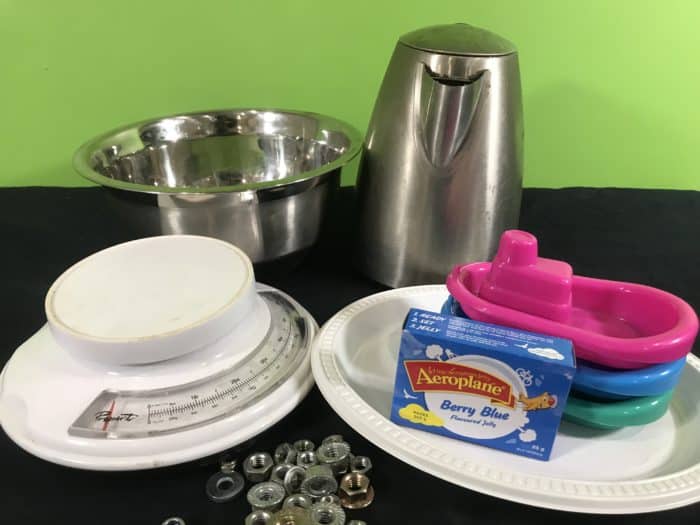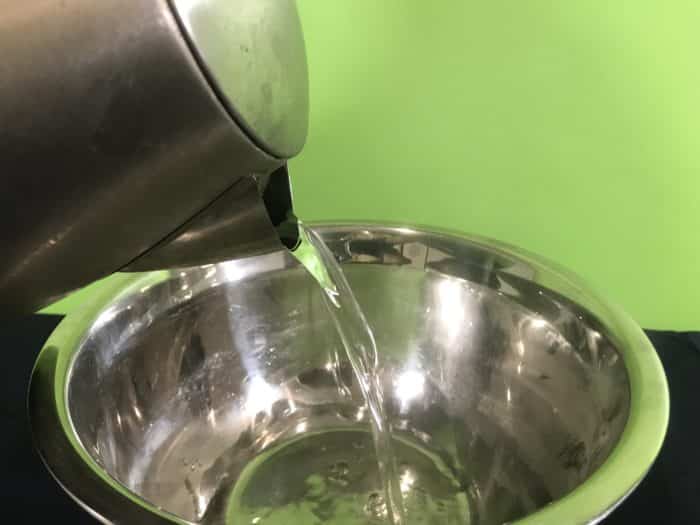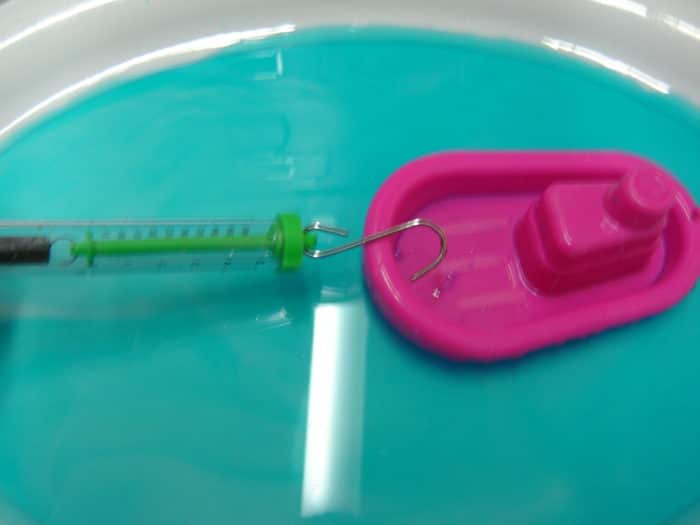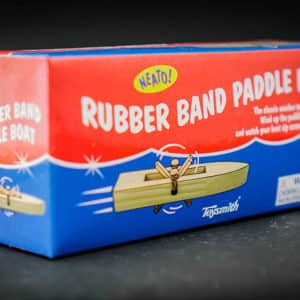You will need:
- Different toy boats, each with a different hull shape
- Jelly crystals, enough for 2 litres
- Newton spring balance from school
- Large flat platter for each boat and a measuring scale
- Small screw hooks and weights (metal nuts will do)


To make it a fairer test, weigh the lighter boats down with the metal nuts and repeat the experiment. Remember to make sure that the weight is evenly distributed along the boat.
Work out how you can make this an even fairer test.
For example: pulling from the same point of the boat, at the same angle, as the same speed, thought the same amount of jelly. Or should you use blocks with different shaped wedges attached instead?

School science visits since 2004!
– Curriculum-linked & award-winning incursions.
– Over 40 primary & high school programs to choose from.
– Designed by experienced educators.
– Over 2 million students reached.
– Face to face incursions & online programs available.
– Early learning centre visits too!
Why Does This Happen?
An object is set into motion when it is pushed or pulled, i.e. subjected to a force.
Force is measured in Newtons, which expresses the amount of energy being applied over a given distance and time. To pull the boat through the jelly required a certain amount of force to keep it moving. The greater the force applied, the greater the spring stretched within the spring scale.
Each boat would have had a different angle on its bow to cut through the jelly. If the boat had an acute-angled bow (i.e. ‘sharp’), the boat would have neatly cut through the jelly and would have required less force to keep it moving. If the boat was shaped like a barge, with a blunt front end, a larger force would need to have been applied to keep the boat moving at the same speed.
Ice breakers in polar regions are designed to slowly rise up onto the ice, thereby allowing the weight of the boat and the shape of the bow (an inclined plane) to break the ice. This process isn’t performed at great speed as the ship can still be damaged. Dense pack ice cannot be negotiated as the ice floes are too thick, however thin ice of a few metres thick can be broken. Commercial shipping lanes within the Arctic circle are regularly cleared by ice breakers.
Variables to test
- Change the shape of the boat
- Swap jelly for golden syrup, molasses, water and other liquids
- Add extra weight to the boat
Teaching about forces? From momentum to Newton, the Forces, Friction & Movement workshop has you covered!
Get in touch with FizzicsEd to find out how we can work with your class.
Forces, Friction & Movement
Years K to 6
Maximum 30 students
School workshop
60 or 90 minutes
Online Class Available
STEM Full Day Accelerator - Primary
Designed from real classroom experiences, this modular day helps you create consistently effective science learning that directly address the new curriculum with easily accessible and cost-effective materials.





























Comments